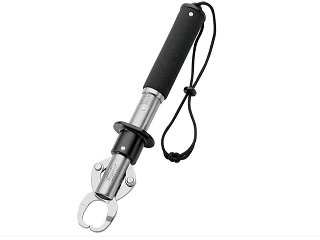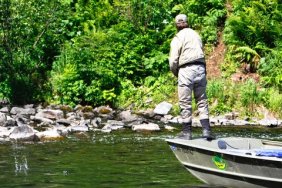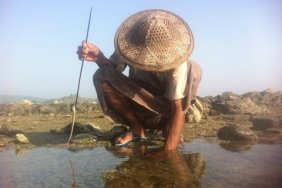 Whether they hunt or fish, any true outdoorsman will tell you that landing a fish or bringing down a buck is not the most important aspect of the sport. No, at its core, the outdoors is about the preservation of our natural resources, which include game of all shapes and sizes. Last week, we explored how anglers can contribute to healthy ecosystems by implementing catch and release practices. Today, we’ll take a look at some of the tools you can use to do this properly.
Whether they hunt or fish, any true outdoorsman will tell you that landing a fish or bringing down a buck is not the most important aspect of the sport. No, at its core, the outdoors is about the preservation of our natural resources, which include game of all shapes and sizes. Last week, we explored how anglers can contribute to healthy ecosystems by implementing catch and release practices. Today, we’ll take a look at some of the tools you can use to do this properly.
Your landing gear will be a big factor in the catch and release process. Large fish and species that are known for thrashing a lot will require nets or cradles, while smaller fish can often be landed by hand. Nets are available in a wide array of sizes and models to suit different conditions and the varying sizes of fish. Higher end nets also have extra features that support catch and release fishing. These nets tend to be coated with, or entirely made from rubber. They also have netting without knots. Knotted nets can sometimes damage fish struggling in the mesh. Coated and knotless netting remove little, if any, of the protective slime from a fish when landed. As we touched upon last week, this slime serves as a critical protective layer for fish and if removed, makes them more vulnerable to infection and post-release mortality.
Another device that makes landing fish a bit easier is a lip gripper. These clamping devices hold the lower jawbone of fish in place and keep the fish steady during the hook removal process. Most models only require one free hand to operate and allow you to keep the fish in the water while you remove the hook, which makes it a great tool for solo fisherman. Some models also include a scale in their handle as well.
Once you land a fish, you’ll need to remove the hook quickly. Pliers and hook removers are critical tools in catch and release fishing. Both come in a variety of designs, with dozens of features. There are even floating plastic models available. Anglers seeking toothier fish will want heavy-duty pliers that offer a long reach in order to safely negotiate around a fish's mouth and teeth. Cutters are also sometimes preferred by anglers fishing with big baits for toothy fish. With cutters it's easier to quickly cut hooks and remove all the hook pieces, rather than struggle with treble hooks amid a few dozen teeth. This also reduces the time it takes to release fish, lessening the chances of the fish dying after being released.
Some scoff at the notion of catch and release, claiming it requires too much time or not understanding why everyone doesn’t just eat all the fish they catch. I’m not condemning eating your catch. In fact, if I hook into a few walleye or head out for bluegill or perch, you better believe they’ll be in my stomach by the end of the day. By incorporating a catch and release mentality, though, you can ensure the proper, healthy growth of an ecosystem by allowing fish to grow and ensure future excitement for everyone on the lake.








